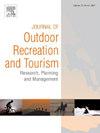Exploring the impact of park features and visitors’ socioeconomic status on park visitation: A case study of Austin, Texas
IF 3.6
3区 管理学
Q1 HOSPITALITY, LEISURE, SPORT & TOURISM
Journal of Outdoor Recreation and Tourism-Research Planning and Management
Pub Date : 2025-03-19
DOI:10.1016/j.jort.2025.100877
引用次数: 0
Abstract
Urban parks offer significant environmental, social, and economic benefits, and understanding the factors that influence park usage is crucial to maximizing these benefits. Previous research has established that park visitation is associated with park features (e.g. vegetation, access to park, park amenities). However, there is a limited body of research on the relationship between specific park attributes and park usage among different demographics and income groups. To address this research gap, we took Austin, Texas as our study site, and utilized longitudinal individual-level and location-based big data (SafeGraph) to examine how park features, involving park characteristics (i.e. size, age), park natural features (i.e. tree canopy, water), and facilities, influence park usage across demographics and income groups. Our research reveals several key factors that influence park visitation. Median household income, distance to the park, the percentage of married couple households in the block group, and the percentage of people working from home are negatively associated with park visitation. Conversely, the percentage of males, median age, the percentage of children, and the percentage of the population owning houses are positively associated with park visitation. Additionally, we examined the various preferences towards park features across different income groups. The low-income group prefers parks that are newer, with water features, and with swimming pools. Tree canopy is a positive predictor for visitation among the low-income group at the p < 0.1 level. The middle-income group favors parks with scenic viewpoints but not parks with sports facilities. The high-income group is more likely to visit parks with water features. These findings provide valuable insights into how demographic groups prefer park visitation and how park characteristics that may encourage park visitation among different income groups, and they can help guide urban planners, designers, and policymakers in the allocation of parks with specific features to benefit different demographic groups urban residents to the greatest extent.
公园特征和游客社会经济地位对公园游客的影响——以德克萨斯州奥斯汀市为例
城市公园提供了显著的环境、社会和经济效益,了解影响公园使用的因素对于最大化这些效益至关重要。先前的研究已经证实,公园游客与公园特征(如植被、公园通道、公园设施)有关。然而,在不同的人口统计和收入群体中,对特定公园属性与公园使用之间的关系的研究有限。为了解决这一研究缺口,我们以德克萨斯州奥斯汀市为研究地点,利用纵向个人层面和基于位置的大数据(SafeGraph)来研究公园特征(包括公园特征(即规模、年龄)、公园自然特征(即树冠、水)和设施)如何影响不同人口统计和收入群体的公园使用。我们的研究揭示了影响公园游客的几个关键因素。家庭收入中位数、到公园的距离、街区组中已婚家庭的百分比以及在家工作的人的百分比与公园的访问量呈负相关。相反,男性比例、年龄中位数、儿童比例和拥有房屋的人口比例与公园访问量呈正相关。此外,我们还研究了不同收入群体对公园特色的不同偏好。低收入群体更喜欢较新的、有水景和游泳池的公园。林冠对低收入人群的旅游有正向预测作用。0.1水平。中等收入群体更喜欢风景优美的公园,而不是有体育设施的公园。高收入人群更有可能去有水景的公园。这些研究结果对人口群体对公园旅游的偏好以及不同收入群体对公园旅游的偏好提供了有价值的见解,可以指导城市规划者、设计师和政策制定者配置具有特定特征的公园,最大限度地使不同人口群体的城市居民受益。
本文章由计算机程序翻译,如有差异,请以英文原文为准。
求助全文
约1分钟内获得全文
求助全文
来源期刊

Journal of Outdoor Recreation and Tourism-Research Planning and Management
HOSPITALITY, LEISURE, SPORT & TOURISM-
CiteScore
6.70
自引率
5.30%
发文量
84
期刊介绍:
Journal of Outdoor Recreation and Tourism offers a dedicated outlet for research relevant to social sciences and natural resources. The journal publishes peer reviewed original research on all aspects of outdoor recreation planning and management, covering the entire spectrum of settings from wilderness to urban outdoor recreation opportunities. It also focuses on new products and findings in nature based tourism and park management. JORT is an interdisciplinary and transdisciplinary journal, articles may focus on any aspect of theory, method, or concept of outdoor recreation research, planning or management, and interdisciplinary work is especially welcome, and may be of a theoretical and/or a case study nature. Depending on the topic of investigation, articles may be positioned within one academic discipline, or draw from several disciplines in an integrative manner, with overarching relevance to social sciences and natural resources. JORT is international in scope and attracts scholars from all reaches of the world to facilitate the exchange of ideas. As such, the journal enhances understanding of scientific knowledge, empirical results, and practitioners'' needs. Therefore in JORT each article is accompanied by an executive summary, written by the editors or authors, highlighting the planning and management relevant aspects of the article.
 求助内容:
求助内容: 应助结果提醒方式:
应助结果提醒方式:


